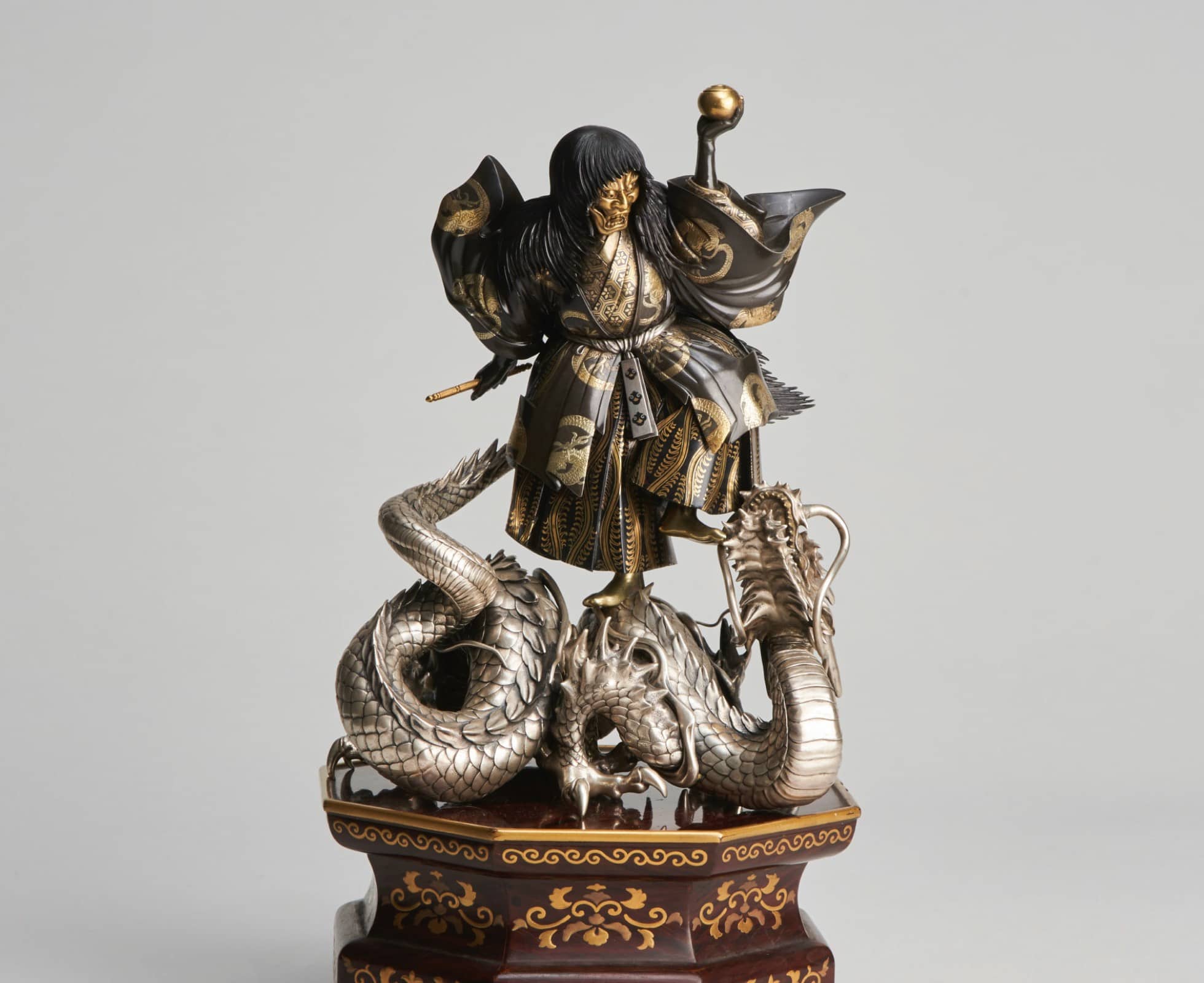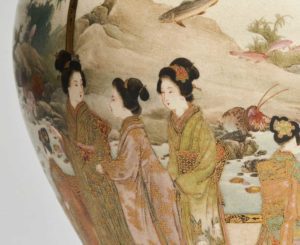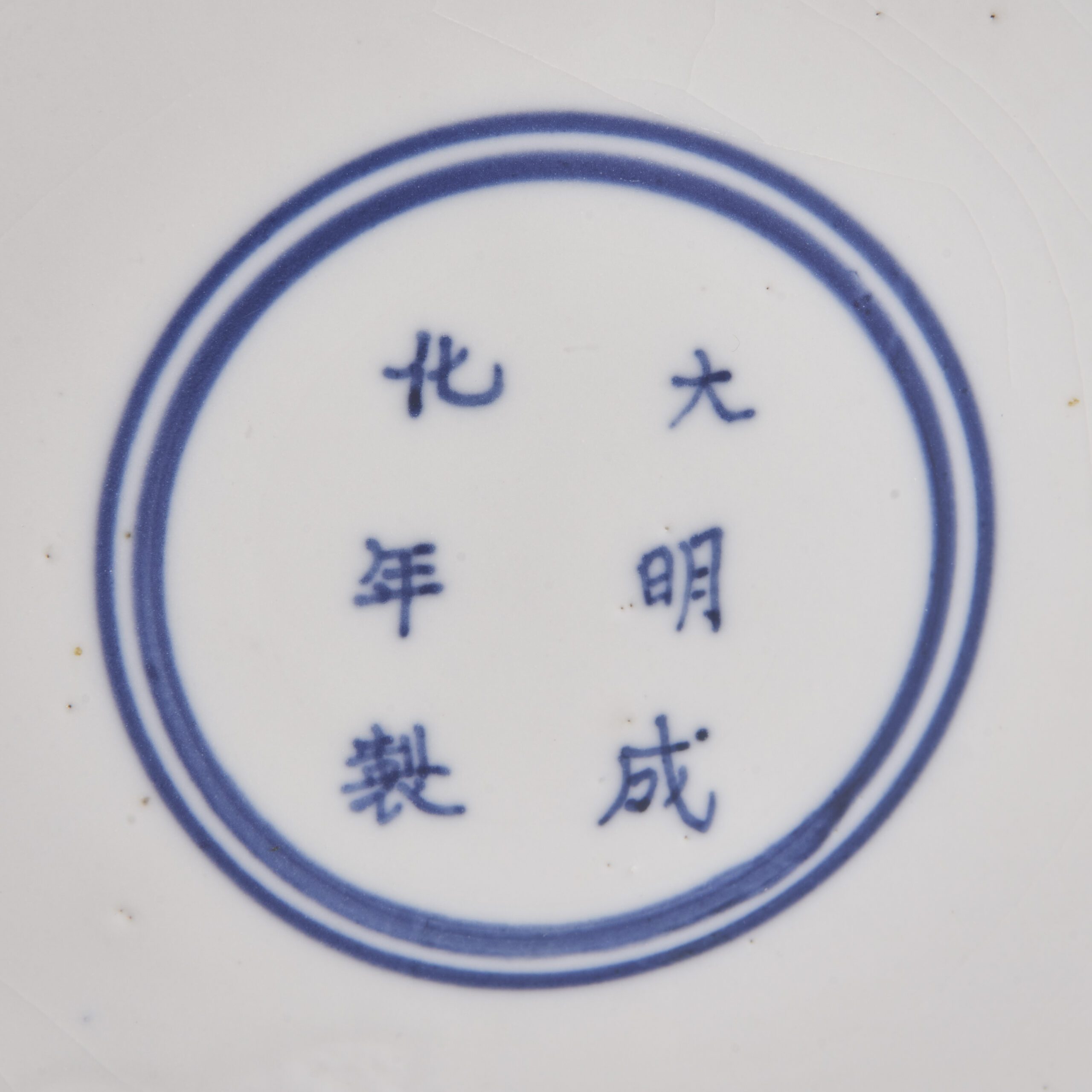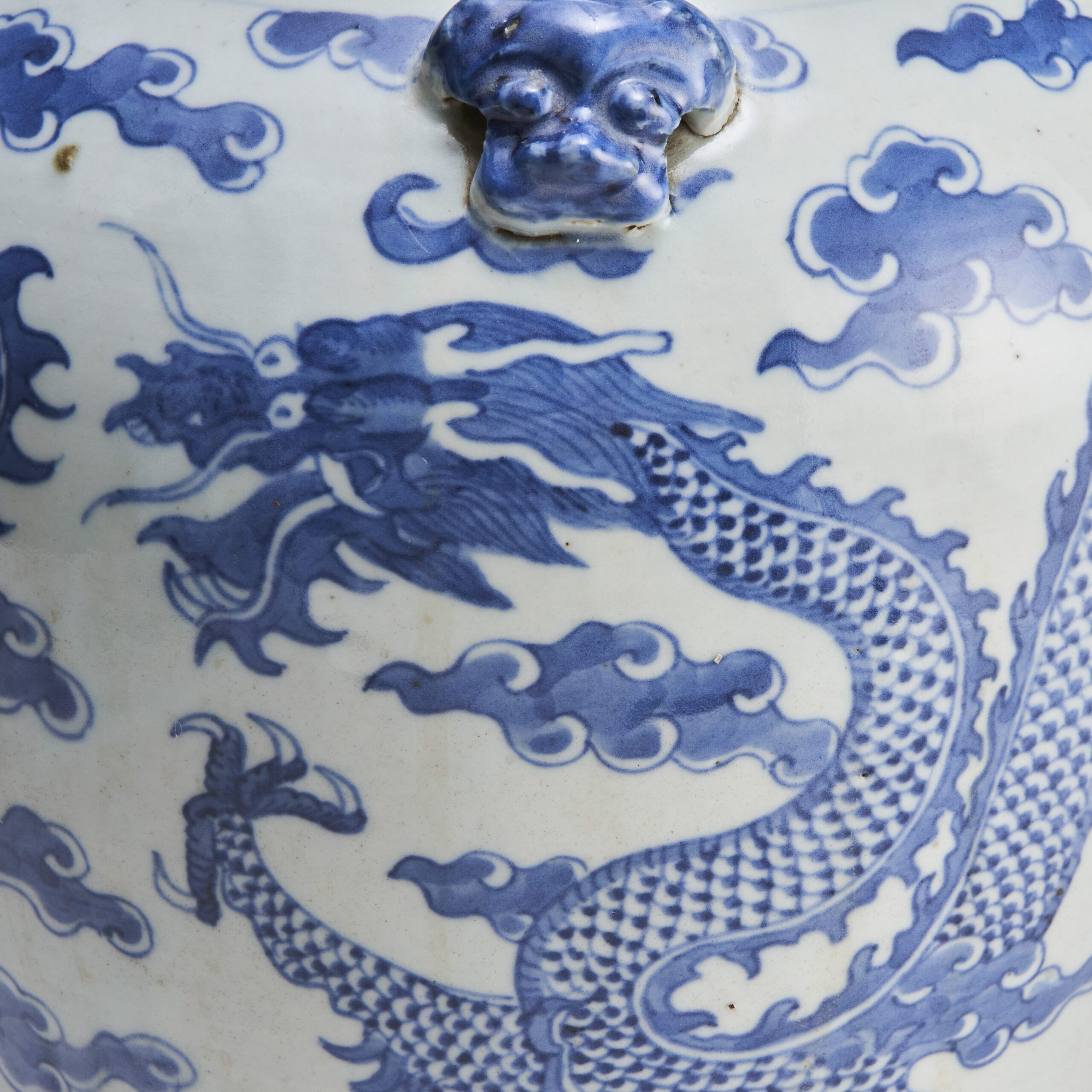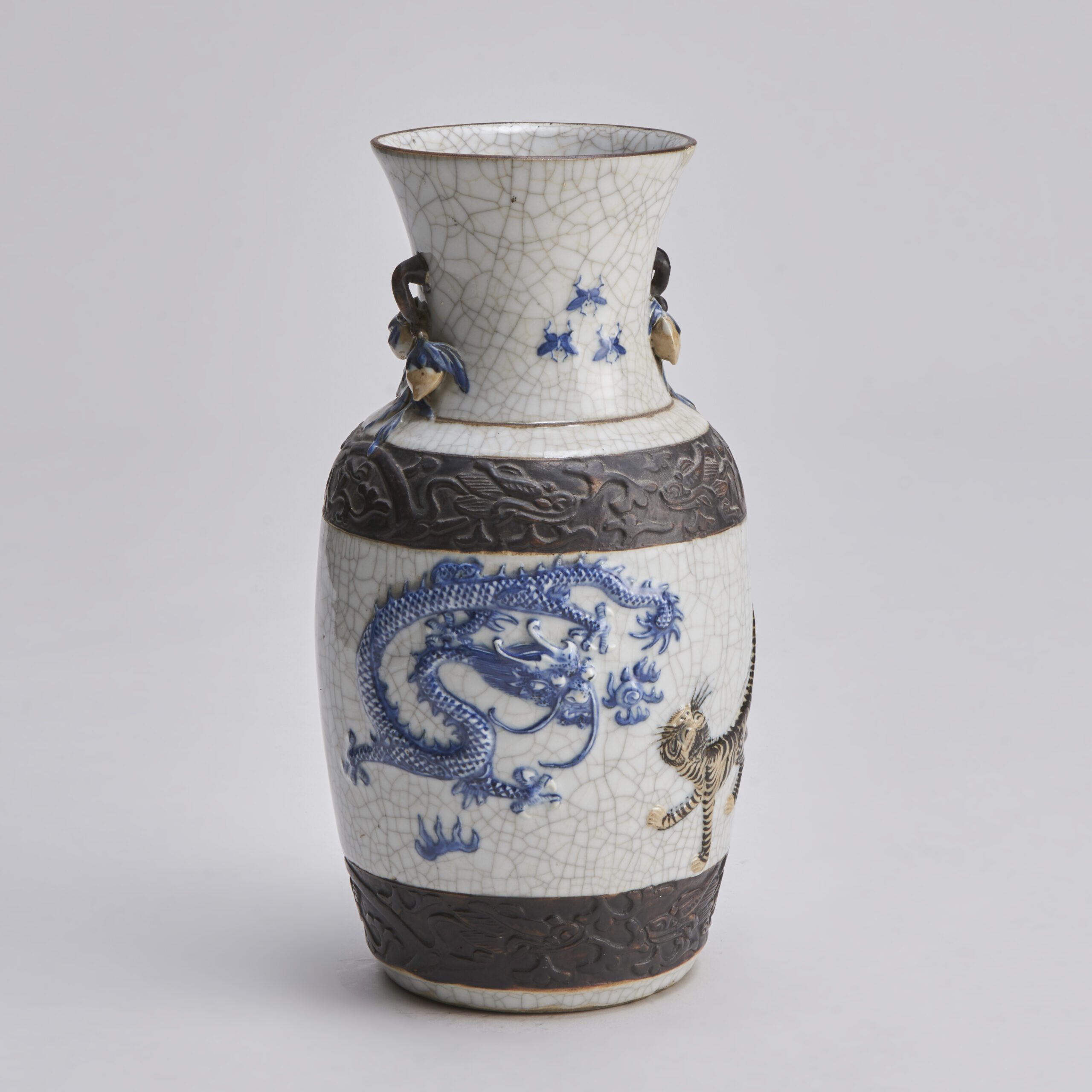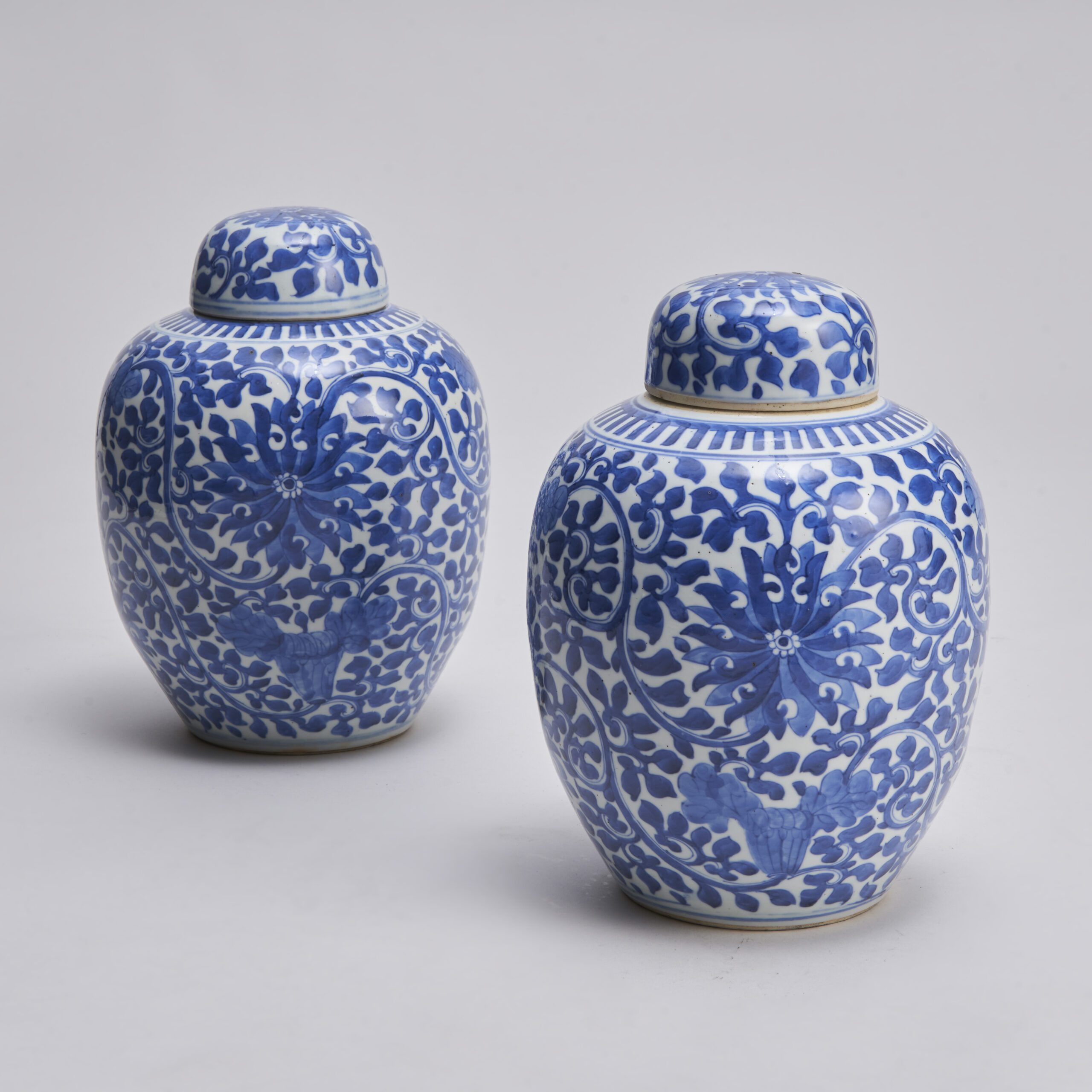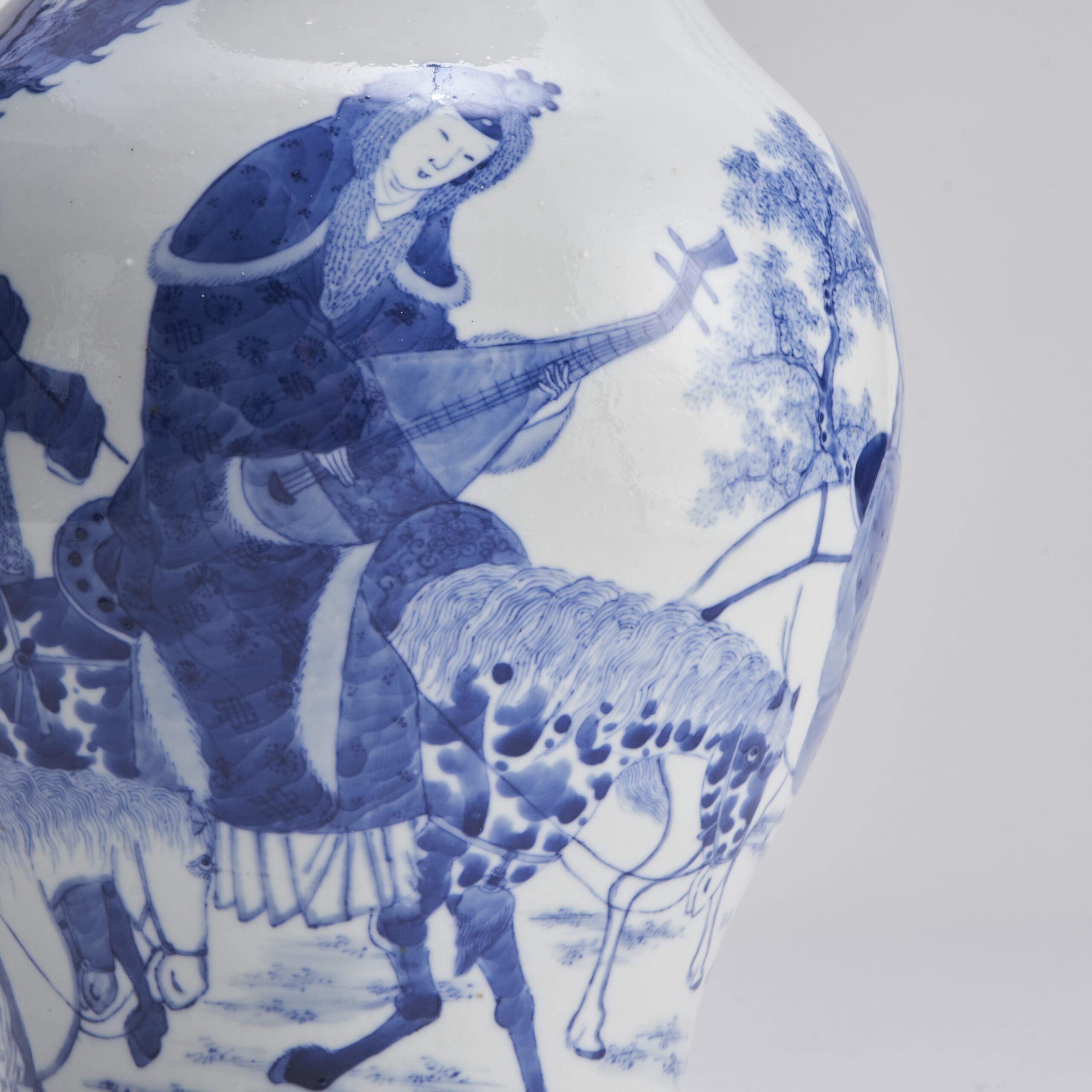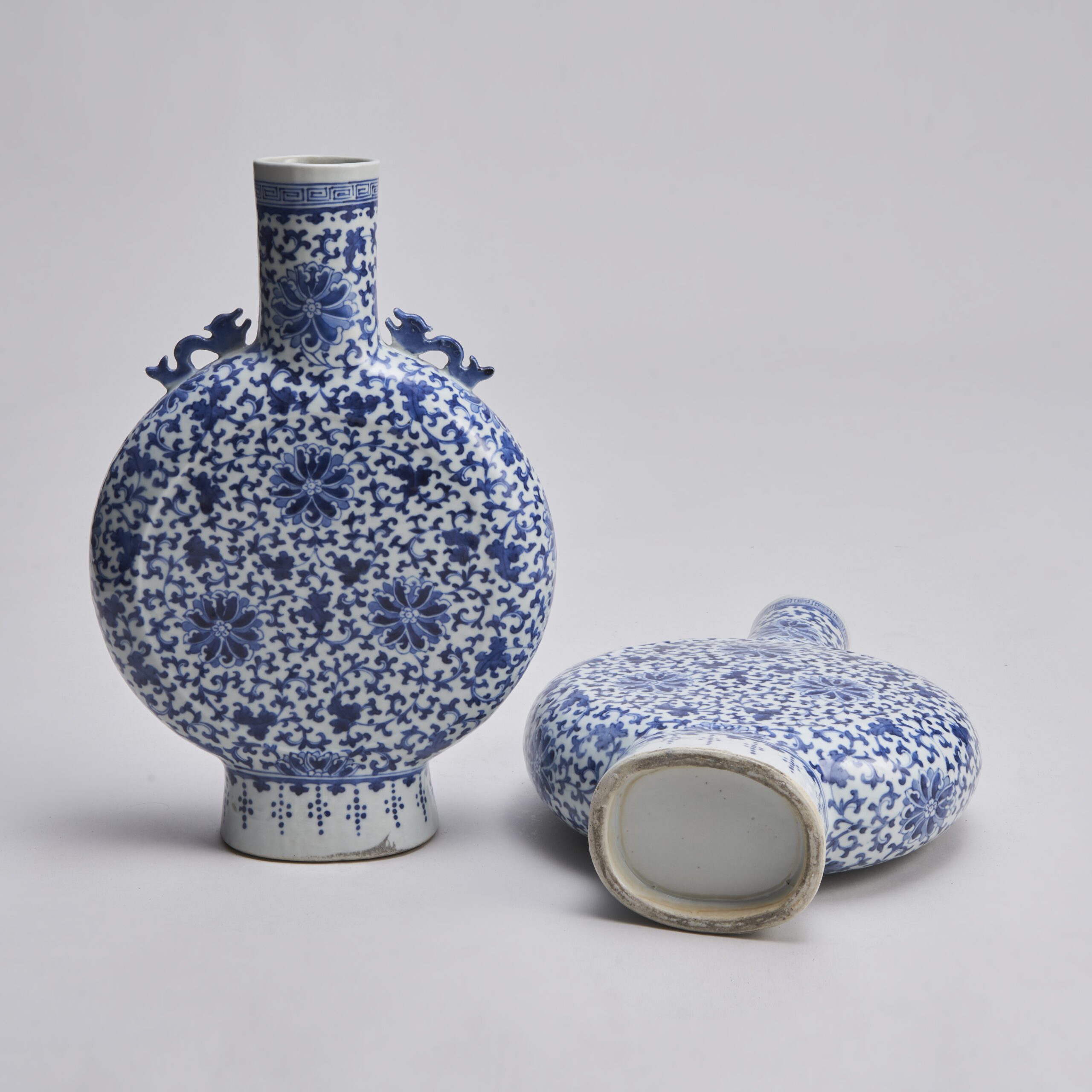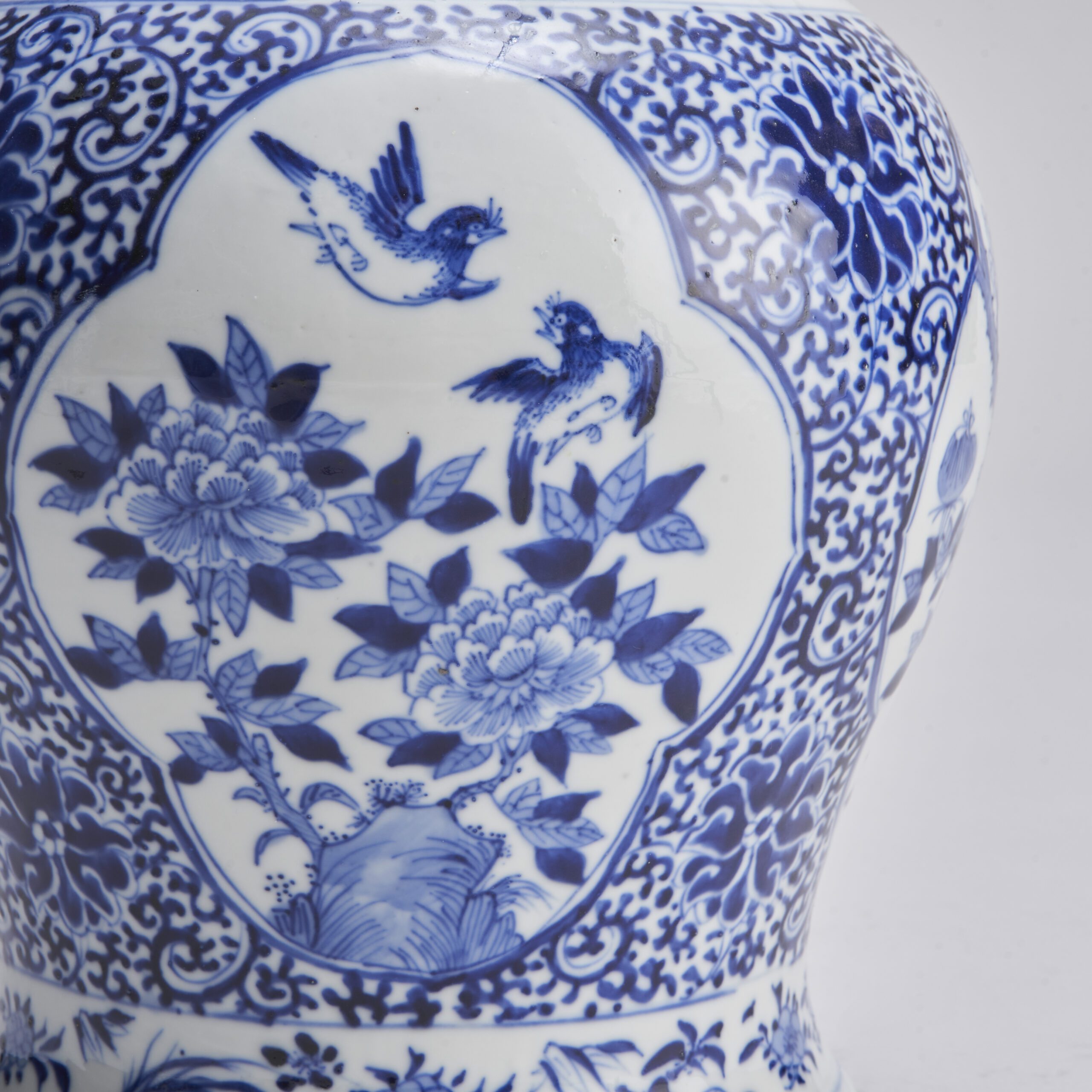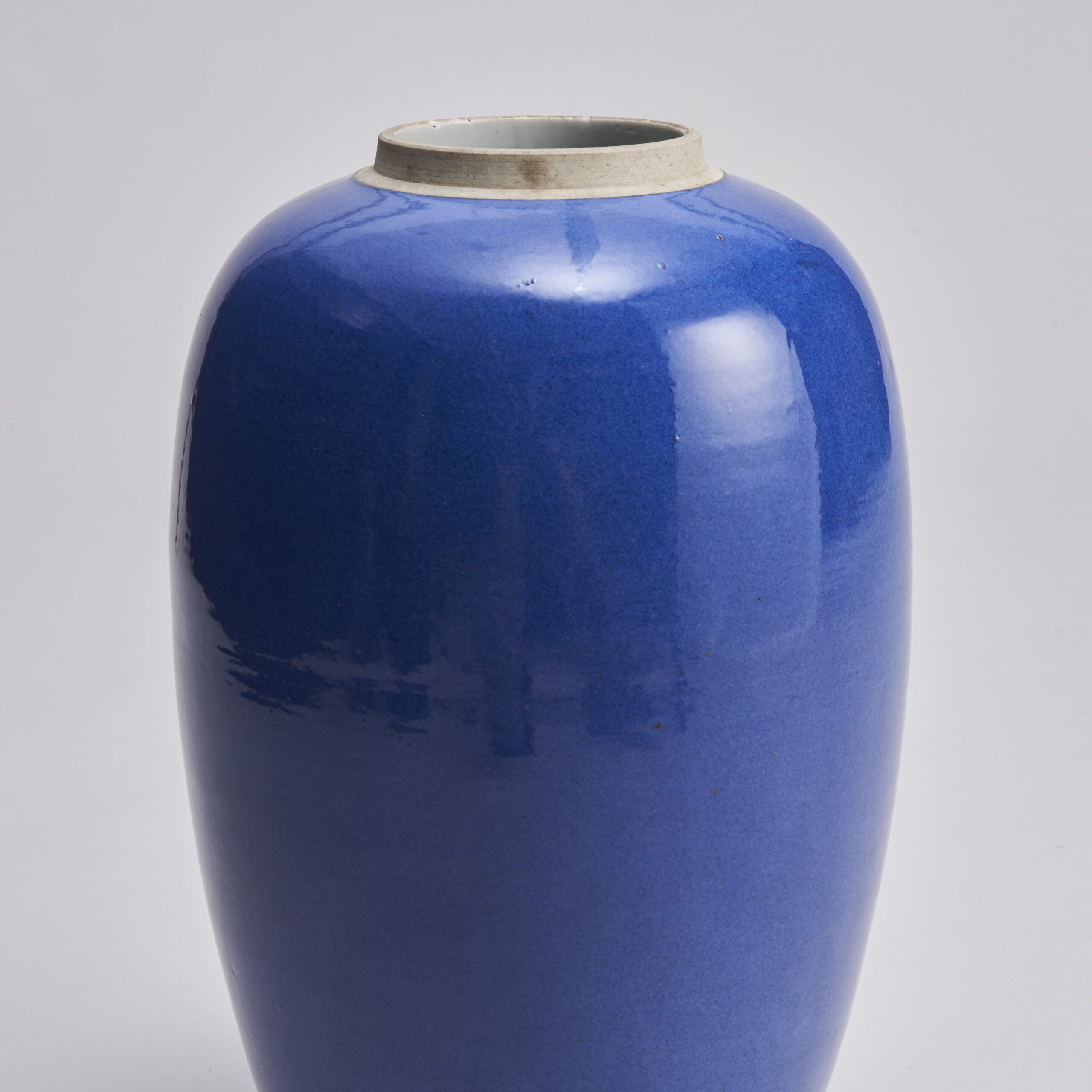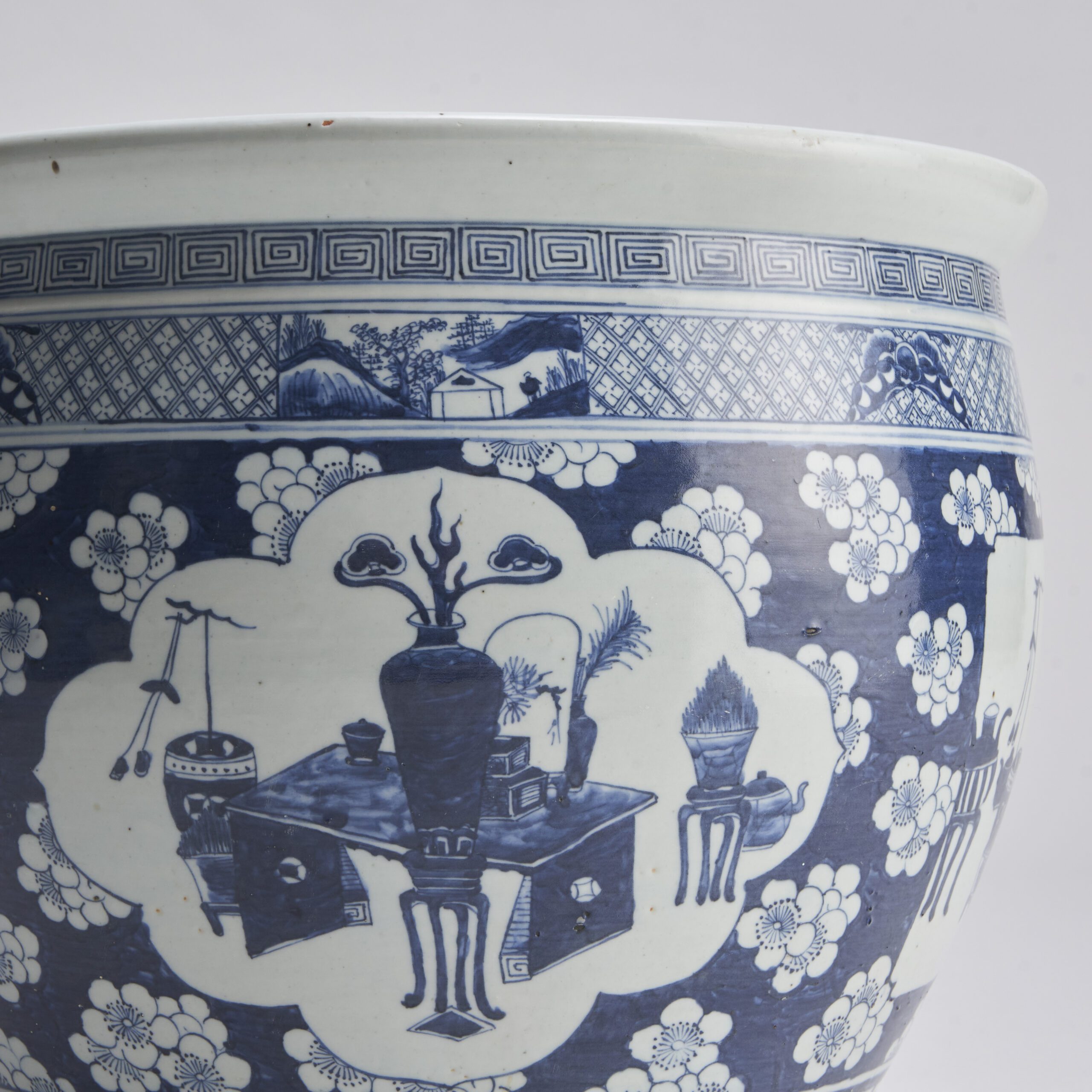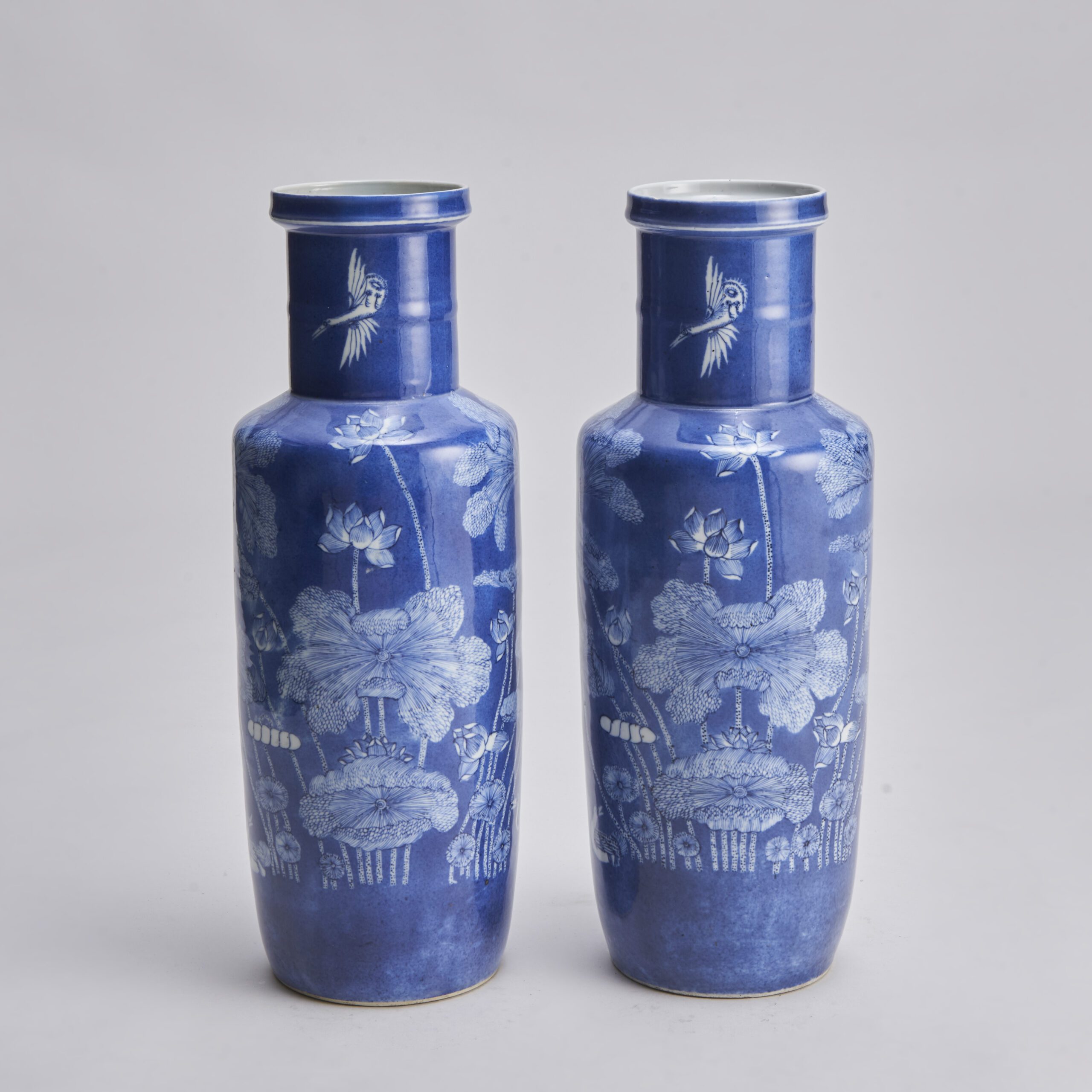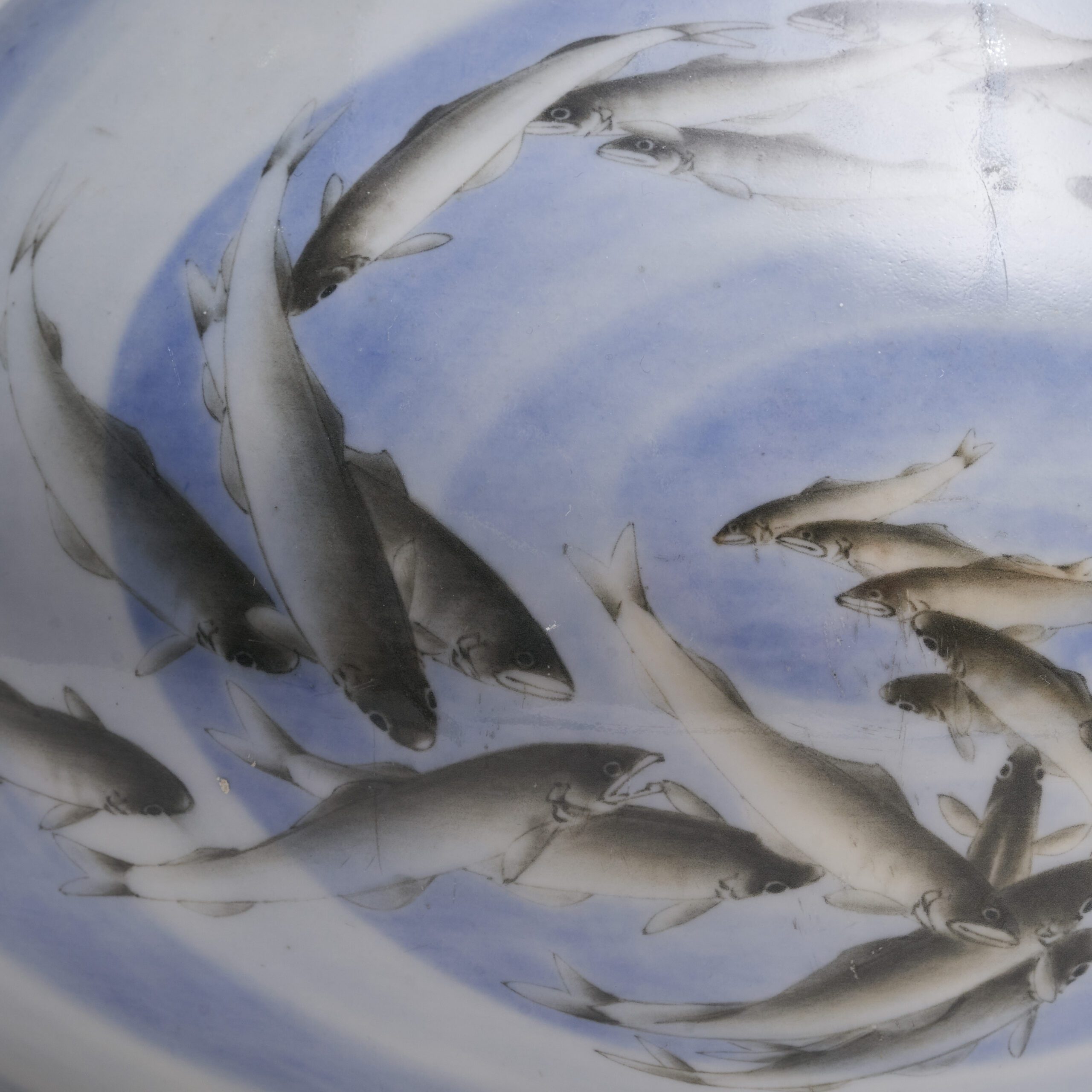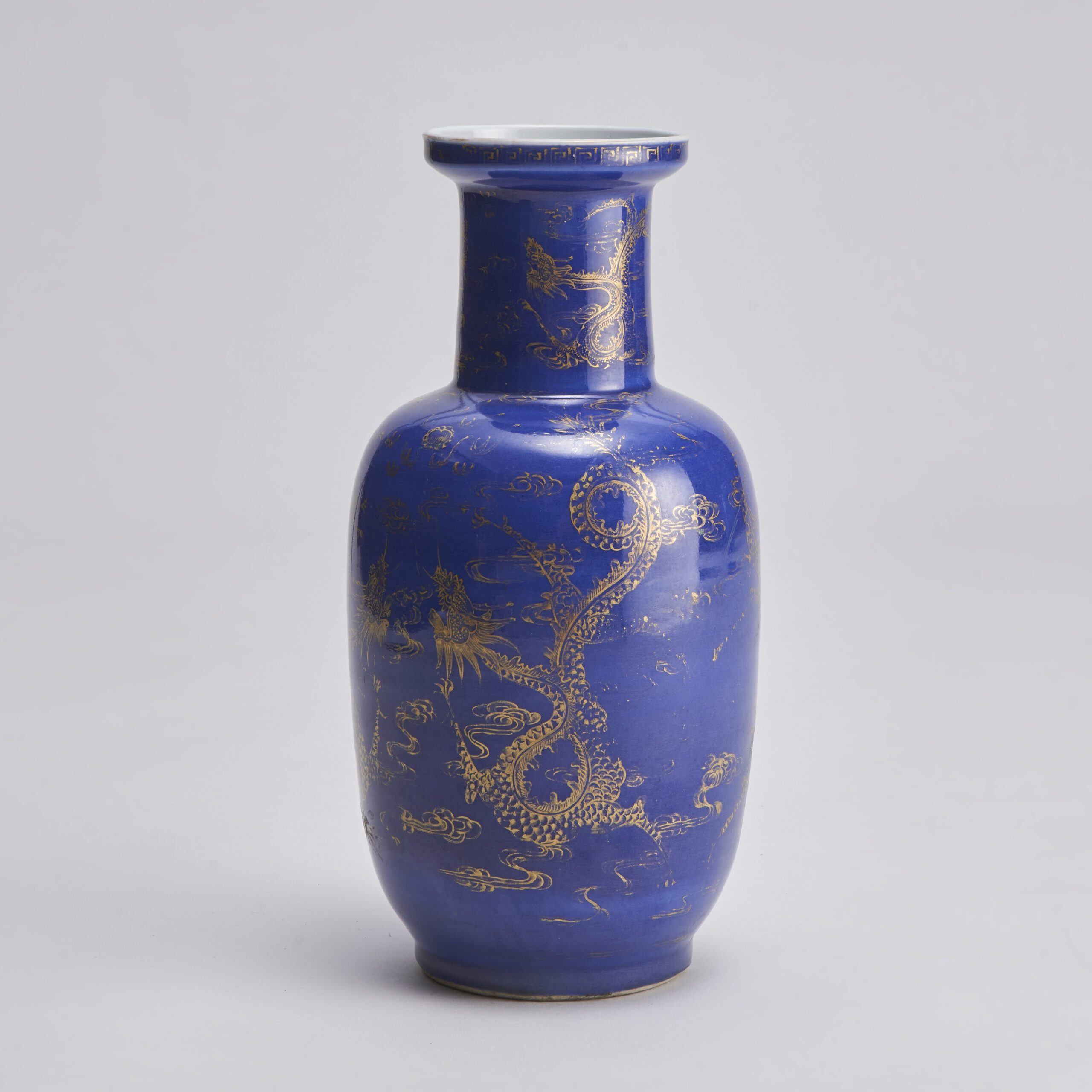Over the last few weeks, we have been introducing a selection of beautiful 18th and 19th Century Chinese porcelain to our website and this has inspired us to put together a Glossary of useful terms and phrases that often appear when describing and writing about antique Oriental ceramics.
We hope you enjoy the read. Don’t hesitate to contact us if you have any questions though or would like any additional information. (You can click on any of the images below to take a closer look at that particular object.)
Butterfly (China)
In China the butterfly is a symbol of Summer. It also represents young love.
Butterflies dancing around flowers at the top of this pair of Blue and White sleeve vases
Concentric Ring Mark
Two concentric ring marks are often seen on the base of Chinese porcelain, it is believed this comes from the Kang Hsi period, the reign mark would normally go within but it was time of political unrest so some were left blank. In the 19th and 20th century there was a Kang Shi revival in Chinese ceramics and this fashion for concentric blue circles remained.
Concentric ring marks on the underside of this pair of early 19th Century blue and white jars and covers. The mark here reads “Made during the great Chenghua reign of the great Ming dynasty” but these jars are from around 1800.
Crackle glaze
Crackle glaze is a deliberate decorative effect caused by rapid cooling of a fired piece combined with a low silica glaze. It has a long history in Korean and Chinese pottery, pieces from the Chinese Song (960-1279) and Yaun (1271-1368) Dynasties are particularly sought after and notable for their use of crackle.
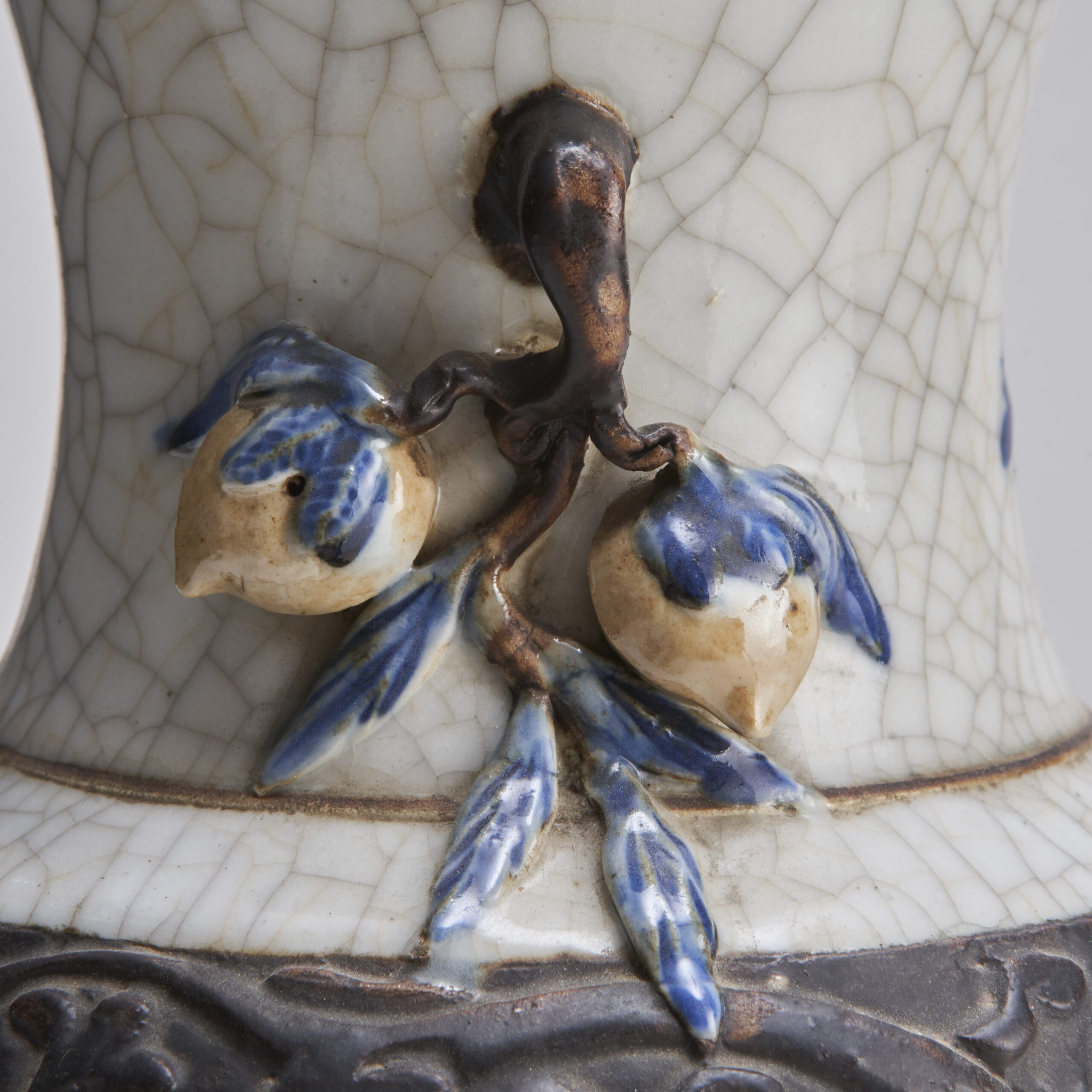
A close up showing the crackle glaze on this 19th Century vase
Crocus Vase
A crocus vase is an interesting form of Chinese vase formed of several smaller vases round a central neck. They were often used to display cut flowers in an interesting way hence the name crocus vase.
A beautiful pair of blue and white Crocus vases
Dragon (Chinese)
The Chinese Dragon is an instantly recognizable symbol of China and was used by the imperial Emperor as sign of his power and strength. They are most commonly depicted as snake like creatures with legs, Asian dragons are rulers of weather and the sea and as such do not need wings to fly. They are not aggressive monsters as often depicted in Western myths, but more creatures of great wisdom who often help mankind and as such they are regarded as lucky. Generally you can tell a Chinese dragon from a Japanese by counting the toes, a Chinese having four or five and a Japanese having three.
A dragon chasing the flaming pearl on this stunning pair of Blue and White covered jars
Dragon and Tiger (China)
The dragon and the tiger when depicted together in Chinese art represent Yin and Yang, the two forces in the universe believed to influence everything with their push and pull. The dragon, said to rule over the heavens, represents Yang and the Tiger, the mightiest of beasts is Yin.
A fascinating crackleware vase with Tiger and Dragon decoration
Fukugawa Koransha (Japan)
Along with his brother Ezaiemon Fukagawa founded the company in 1875, they made porcelain for export to Europe and America under the name ‘Scented orchid’.
An elegant pair of Japanese porcelain vases by Koransha
Ginger Jar
A popular form in Chinese ceramics, ginger jars were originally made to store herbs and spices in the home or pharmacy. They are a high shouldered domed shape, some are squat, some are more elongated, they have no handled or moulded decoration and a smooth lid, these can be ceramic or sometimes wood or metal.
Clematis design on this elegant pair of blue and white Ginger jars
Guanyin (China)
Guanyin is a Bodhisattva (enlightened one) she is the goddess of mercy and compassion.
A depiction of Guanyin on this pair of Blue and White baluster-form vases
Lotus (China)
In China the lotus is a a symbol of honesty, goodness, beauty and purity. Some varieties have 88 petals (8 being a lucky number in China) they are said to bring good fortune.
Lotuses feature on this elegant pair of blue and white Yaolingzun vases
Moon Flask (Baoyueping)
The baoyueping vase shape originally comes from gold and silver wares made in the middle east. The name means embracing the moon (hence the Western name ‘Moonflask’) it is a large round flat sided vase allowing a lot of space for decoration. Often they have arched side handles, these form the ‘embrace’. The name pilgrim flask comes from its resemblance to the drinking flasks that pilgrims used to carry around their necks.
An attractive pair of blue and white Moon / Pilgrim vases
Peach
In China the peach is a blessed fruit and considered a symbol of longevity and immortality.
Peach decoration in this beautiful yet unusual Japanese jar
Penzai (China)
A Penzai is a full size tree grown in such a way as too keep it small and contained in a pot. Although the art of miniature tree growing originated in China most people know it as the Japanese ‘ Bonsai’.
Penzai and floral displays on this large pair of Blue and White covered vases
Peony (China)
The peony is one of the symbols of China, the name in Chinese translates to most beautiful and it is often used in important and religious ceremonies as it has connotations of royalty and honour.
Birds flying over an attractive bush of flowering Peonies
Phoenix Feather Pattern
A pattern resembling the tail feathers of the Fenghuang bird, sometimes called a phoenix. These are often used to decorate necks and rims of vases. It was believed that an odd number of feathers denoted a male bird and an even number a female.
Phoenix feather pattern on the neck of this pair of blue and white vases
Phoenix Tail Yenyen vase (Fengweizun)
The yen yen vase shape is inspired by the Gu vase, but it has a more widely flaring neck resembling a phoenix tail, this is balanced with a heavier bottom.
Phoenix tail decoration at the foot of this pair of Blue and White vases
Powder Blue
Powder blue is a glazing technique that originated in the Ming Xuande Period (1425-1435), the cobalt blue would be blown through a tube with gauze on the end onto unglazed porcelain it would then be glazed and fired, creating this mottled blue effect.
A stylish, monochrome Powder Blue vase
Prunus Blossom ( China)
The plum (prunus) blossom is a symbol of perseverance and resilience in the face of adversity.
Prunus blossom on the ground of this Impressive fish-bowl
Rose
Roses are globally recognized to represent love and devotion.
A decorative Rose border on these Kang Hsi jars
Rouleau Vase (Bangchuiping)
The rouleau or bangchuiping vase is a cylindrical vase with flat shoulders and high neck, it is said to resemble a wooden club which is what the name bangchuiping directly translates as.
A pair of Powder Blue Rouleau vases (Circa 1870)
Ruyi
The Ruyi pattern appears as a border on many Chinese ceramics, the traditional ruyi sceptre hasa long s shaped handle and a head shaped like cloud or lingzhi mushroom. They are an emblem of Ho Xiangu one of the eight daoist immortals and are connected with wishing, power and are a symbol of favour, they can be made out of many materials and are traditional birthday gifts in China.
Ruyi pattern at the shoulder of this pair of blue and white covered jars
Salmon (Japan)
Salmon is a symbol of strength and perseverance in Japan, due to their long spawning migration which often takes them up waterfalls.
A shoal of Salmon swimming on the bodies of this pair of Japanese porcelain vases by Koransha
Shou Lao (China)
Known as the old man of the South Pole, Shou Lao is the human depiction of the star Canopus, the brightest star of the constellation Carina. He is a symbol of longevity and happiness and i usually pictured as an old man with a long white beard with a deer by his side.
Shou Lao depicted on this large pair of Blue and White sleeve vases
Sleeve Vase (Tongping)
The sleeve vase is a shape which was developed during the late Ming/early Qing transitional period. It is also known as the Xiangtuiping meaning elephant’s foot vase.
A single Blue and White sleeve vase (Tongping) with Clematis decoration
Tea Jar
Tea jars were originally used to transport precious tea from China to the west, they were usually square in shape in order to pack together for shipping, other shapes do exist but are rarer. They are often decorated with scenes of Chinese landscapes and were very desirable to show you could afford the status that tea brought. Now almost all are empty but they are still collectors items in their own right.
An impressive Chinese porcelain Blue and White tea jar
Temple Jar (China)
It’s believed that temple jars are named as such as they were originally used to hold the ashes of loved ones in Buddhist temples. Eventually their purpose evolved and they were used to hold spices and herbs.
An imposing Chinese porcelain Blue and White tea jar with original fittings
The Eight Treasures (China)
The eight treasures, also known as the eight precious things, they are frequently depicted on Chinese art and fortune telling coins.
Each has a symbolic meaning, they are:
- The Flaming Pearl – s granting of wishes
- The Double Lozenges – happiness in marriage
- The Stone Chime – a just life
- Pair of Rhino Horns – Happiness
- The Double Coins – Wealth
- Gold and silver Ingots – Wealth
- Coral – Longevity
- Ruyi Sceptre – Wish granting
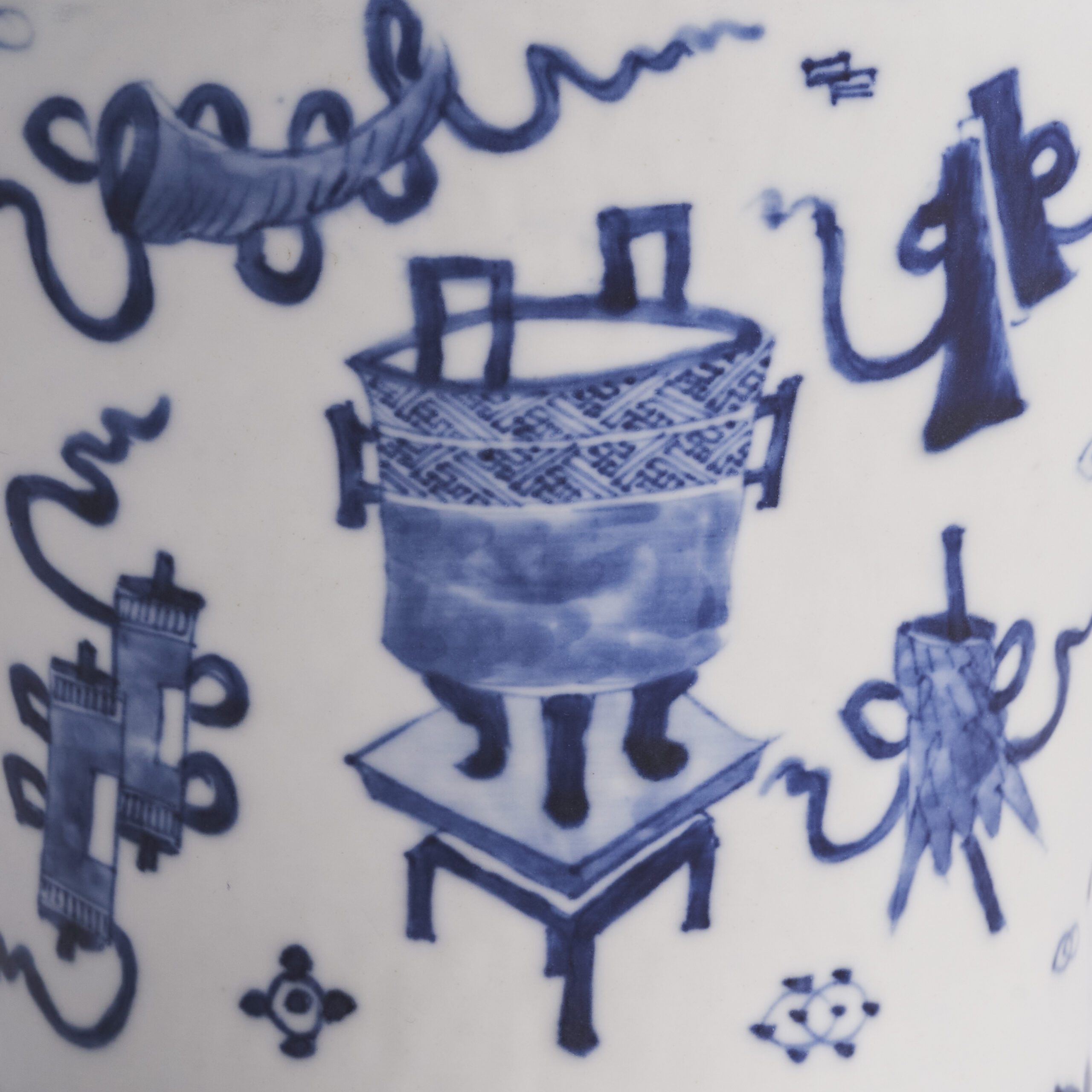
Some of the “Eight Treasures” appearing on the body of this pair of 19th Century vases
Xiangyun (Clouds and thunder meander border)
Although in some forms the interlocking Chinese meander pattern is identical to the famous Greek key pattern they evolved completely separately. Examples of the pattern can be found on neolithic Chinese carvings, and ancient Shang bronzes c1600BC. It seems throughout human history we have found single line patterns a pleasing and practical way to fill space.
In China this pattern is known as auspicious clouds and thunder pattern, it’s said to resemble these weather formations and is a symbol of life giving rain and abundance.
A powder blue rouleau vase with Dragon decoration and Xiangyun decoration to the neck
If you found this article interesting, then you might like to take a look at another blog we wrote a couple of years ago about Chinese export porcelain. You can read that piece by clicking here.
Please don’t hesitate to contact us if you have any questions about antique Chinese porcelain.
You can find similar blogs about Oriental Art by visiting our News and Blog page here.

